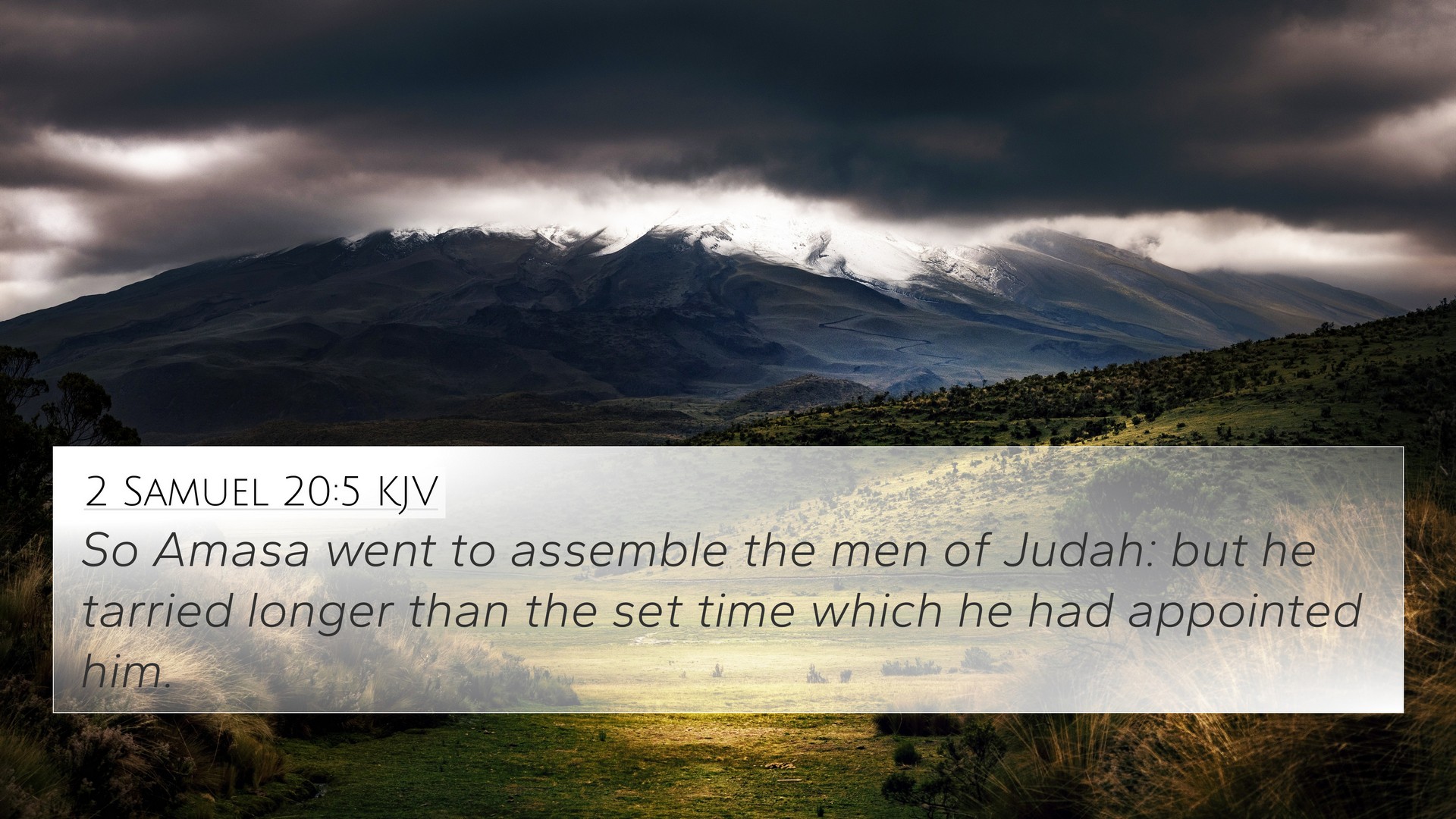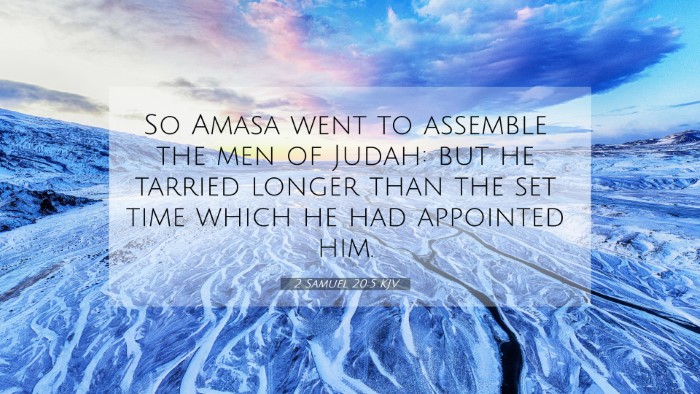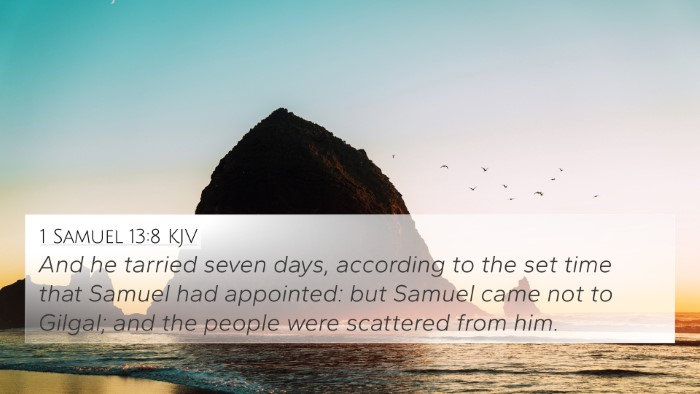Understanding 2 Samuel 20:5
2 Samuel 20:5 presents a vital moment in David's reign, reflecting themes of leadership, divide, and conflict. In this verse, we see the aftereffects of Absalom's rebellion and the ensuing complexities within David's kingdom. David's command was to chase after Sheba, who had caused a divide among the Israelites. The verse highlights David's urgent call for unity and the execution of judgment following internal discord.
Context and Summary
The background of 2 Samuel provides insights into the struggles David faced, both from external foes and internal strife. After Absalom’s rebellion, which almost cost David his throne, tensions continued to simmer within the kingdom. Sheba's uprising threatened the stability David sought to restore.
Commentary Insights
-
Matthew Henry:
Henry elaborates on the discontent that some Israelites felt even after Absalom's execution. He notes that the pursuit of Sheba signifies the need for immediate action to quell unrest and prevent further dissension in the kingdom.
-
Albert Barnes:
Barnes highlights the tactical aspects of David's leadership. He underscores that David’s decision to pursue Sheba illustrates not only the gravity of the situation but also David’s intent to reassert control and unify his people once more after experiencing division.
-
Adam Clarke:
Clarke reflects on David's emotional and psychological state post-conflict. He expresses the king’s determination to restore peace and emphasizes the necessity of decisive leadership in the face of internal threats.
Thematic Connections
Several themes can be extrapolated from this verse, including leadership responsibilities, the repercussions of rebellion, and the quest for unity. This passage showcases the tension between human loyalty and divine kingship.
Cross-References
The following Bible verses share thematic or narrative connections with 2 Samuel 20:5, enhancing our understanding through a process of cross-referencing:
- 2 Samuel 15:10 - Absalom's conspiracy.
- 2 Samuel 19:20 - David's response to Sheba's initial uprising.
- 1 Kings 2:5 - David's final directives regarding justice.
- 2 Samuel 16:21 - The counsel of Ahithophel, showing the political maneuvering of the time.
- Romans 16:17 - The concept of marking those who cause divisions.
- Matthew 12:25 - Jesus's teaching on a divided kingdom.
- Psalm 55:12-14 - The lamentation over betrayal by a close friend, echoing David's pains.
Connections Between Bible Verses
By employing a comparative biblical analysis, we can identify how 2 Samuel 20:5 interacts with other passages throughout both the Old and New Testaments, illustrating abandoned loyalty and seeking reparation for strife within communities.
Tools for Bible Cross-Referencing
To delve deeper into the context and thematic connections around 2 Samuel 20:5, various cross-reference tools can prove beneficial, including Bible concordances and systematic cross-reference guides.
How to Use Bible Cross-References
Understanding the significance of a particular verse can be greatly enhanced through inter-Biblical dialogue. This approach helps uncover the layers of meaning in scriptures, as shown through the connections made between 2 Samuel 20:5 and related verses—each shining a light on different facets of the narrative.
Cross-Referencing Bible Study Methods
Methodologies like thematic studies or detailed examinations of specific themes unify various scriptural texts. By identifying connections, such as those between the Prophets and Apostolic teachings, readers can cultivate a richer understanding of God's overarching narrative.
Conclusion
In summary, 2 Samuel 20:5 not only encapsulates the urgency of David’s response to internal rebellion but also echoes through the tapestry of scripture, linking vital moments of narrative, theme, and teaching throughout the Bible. We must utilize cross-referencing as a tool to deepen our understanding of scripture, engaging with both historical context and timeless principles that apply to our lives today.




